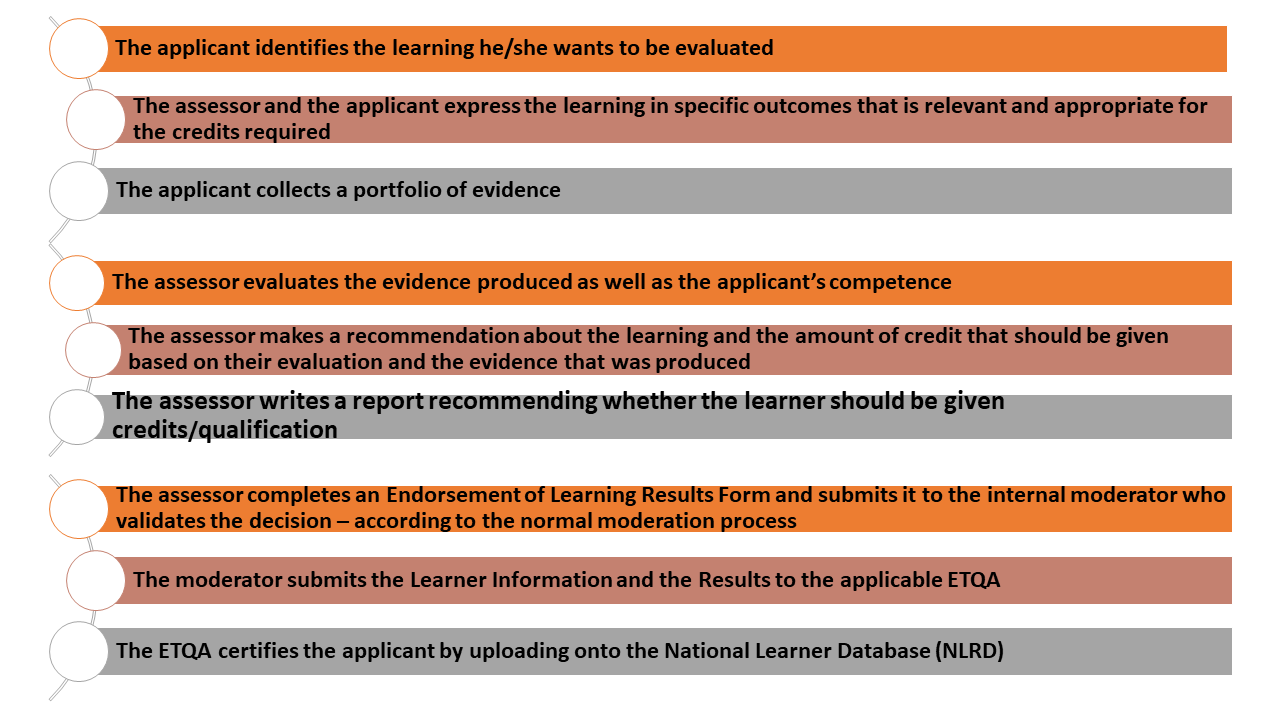Recognition of prior learning gives a person an opportunity to access further and higher education. The idea is to give recognition and credits to those who have learned through informal ways and can prove competence against unit standards and qualifications.
RPL is a method of assessing evidence of competence that can lead to credits and/or qualifications. It is regarded as the first step in a learning programme to build on skills and knowledge that the applicant already has.
According to the National Standard Bodies Regulations (No 18787 of March 1998): “RPL means the comparison of the previous learning and experience of a learner howsoever obtained against the learning outcomes required for a specific qualification and the acceptance for purposes of qualification of that which meets the requirements.”
Purposes for Using RPL
Personal development and certification of the candidate’s current skills and knowledge without participation in another level of a learning programme.
To fast-track advancement from one level to another.
For promotion in his/her career based on the competence achieved.
For assessment of competence for a career or job change.
Recognition of learning that the candidate acquired in an informal setting.
Click here to view a video that explains Recognition of Prior Learning (RPL)
The Process of RPL
RPL involves four basic processes:
- Identifying what the applicant knows and can do.
- Comparing those skills and knowledge with the unit standard or qualification.
- Assessing the applicant against these standards and requirements.
- Crediting the applicant where applicable.
RPL consists of nine steps:

Methods that may be used for RPL purposes include:
- Interviews
- Portfolios
- Written assessments
- Site visits
- Demonstrations
- Submission of assignments/projects
- Testimonies